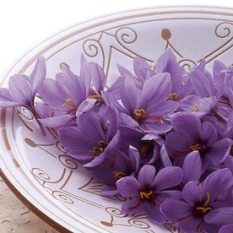Fig
The Common fig (Ficus carica) is a large, deciduous shrub or small tree native to southwest Asia and the Mediterranean region (from Afghanistan to Portugal). It grows to a height of 6.9–10 meters (23–33 ft) tall, with smooth grey bark. The leaves are 12–25 centimeters (4.7–9.8 in) long and 10–18 centimeters (3.9–7.1 in) across, and deeply lobed with three or five lobes. The fruit is 3–5 centimeters (1.2–2.0 in) long, with a green skin, sometimes ripening towards purple or brown. The sap of the fig's green parts is an irritant to human skin.
Fig has unique medical and caloric properties, which has been recognized from old days. The ancient Greek knew fig as an antidote. Fig is one of the best and nutritious foods for those who have suffered from chronic diseases. Fig is a fruit full of energy which is used in different forms: wet, dry, marmalade, syrup, chocolate and also mixed with other items such as sesame, nut and milk. Having about 65 to 70 percent sugar, fig is one of the energetic fruits. Also, it has a lot of carbon-hydrate, sodium, calcium and potassium.
The medical properties of fig:
Fig is very useful for softening chest and intestines. Boiled fig is prescribed for the inflammation of breathing system and its gargling is very useful for sore throat and cold and it cures throat and gum infections.
Fresh and dry fig causes laxity and cures chronic constipation. Recent medicine makes syrup out of fig which is called “figin” which is used to cure children’s constipation.
History of fig plantation and production in Estahban:
The city of Estahban with more than 22133 acres of fig plantation and a history of more than 250 years of fig production has the highest record of producing this fruit in the world. As such, this city has gained the most important rank in the world in the production and exportation of dry fig with an annual production of more than 22000 tons. |

